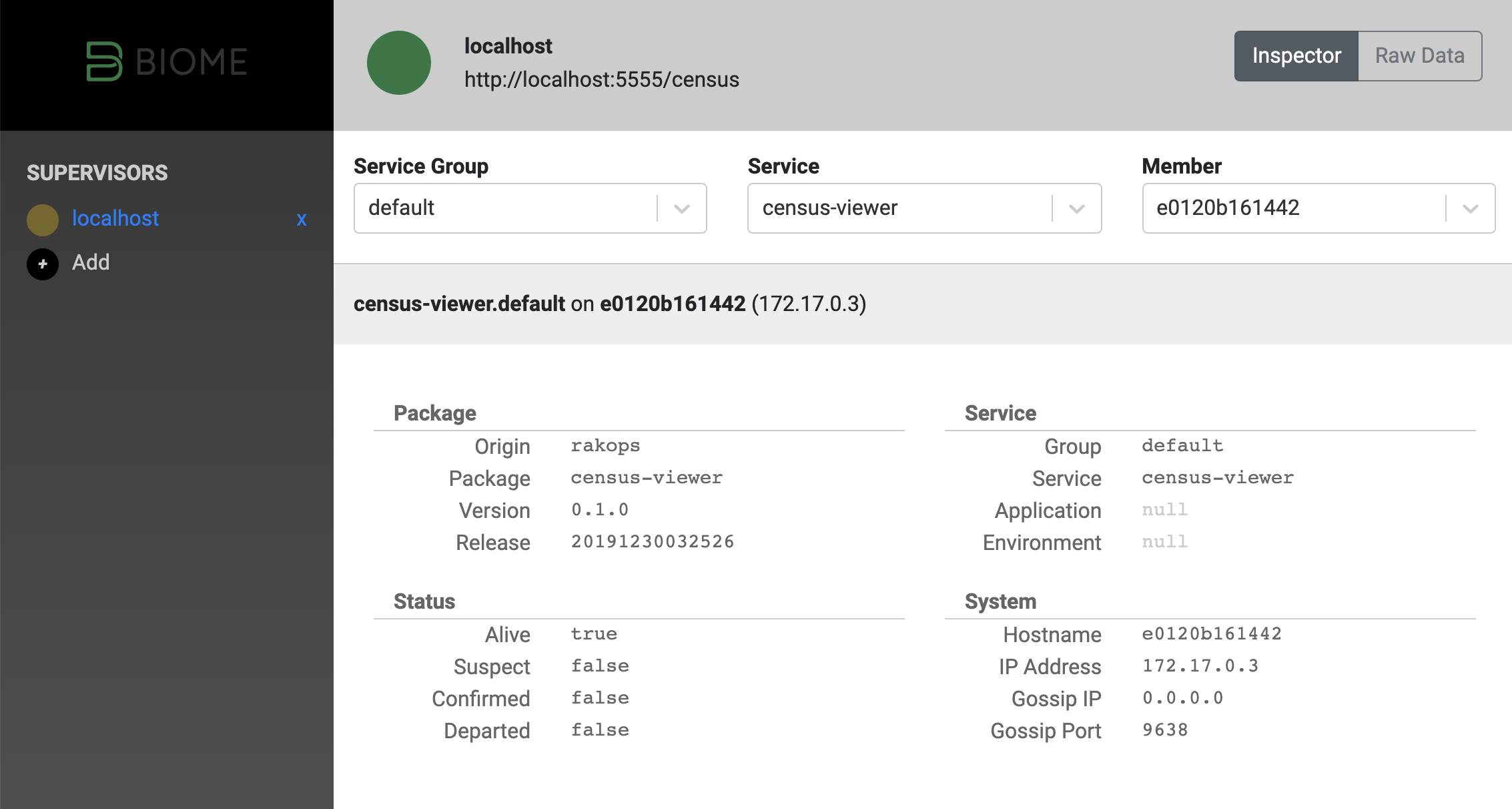I’ve been using Chef’s Habitat(tm) and the community distribution “Biome” for a while now. I love the systems, and the community. However, the tools surrounding its usage have not been developed much in the way of graphical systems to aid administration.
Thats all changing!
I’ve worked for a couple of months on a prototype/alpha administrative viewer for the Habitat/Biome.

The census viewer comes in 2 parts:
I’ve been doing fairly regular and extensive contributions to the Habitat core-plans repository over the last couple of years. Primarily keeping packages up to date, but also contributing new ones, and helping shape the structure and format of our approach to testing all packages, to ensure quality.
One of the challenges with diverse management of open source software is keeping up to date with changes as they happen. There are a number of projects and sites around that track open source software and can provide notifications, but none offered up-to-the-second source based version information.
Wow! This year during ChefConf 2019 I was awarded as an “Awesome Community Chef” by the Chef community!
For the past 2 years or so, I’ve been putting in a lot of personal time and effort to contribute back to the Habitat project, by way of the central core-plans repository. From here, I’m able to help maintain, update, fix and strengthen software that is used by countless developers and operators around the world.
There is no completely correct or incorrect way to contribute to open source.
As long as your motivations are in the interest of improving the project, or contributing good resources to the community, I recommend going for it!
Contributions come in all shapes and sizes. Even if you’re fixing a small typo in documentation, or refactoring a large section of code, your contribution is valuable and helpful. Keep that in mind.
Habitat’s core-plans is the central repository for packages/plans maintained by a group of volunteers. These plans form the basis of pretty much everything built with Habitat. From low level libraries and tools such as GCC, glibc, openssl to high level applications like Jenkins, Artifactory, and a whole range of others. The full list can be seen in the Github repository.
Theres a bunch of things that happens behind the scenes of your pull request on the Habitat core-plans repository.